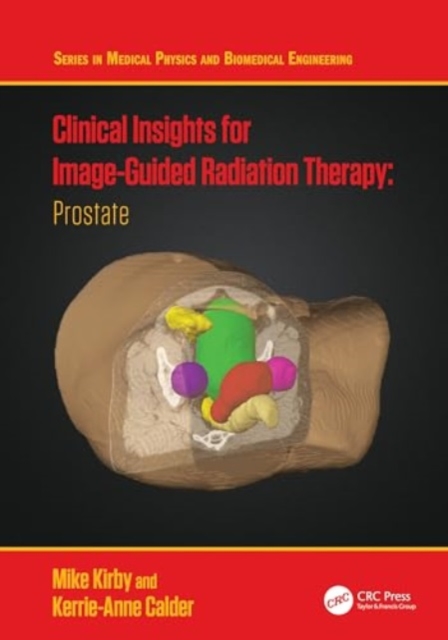
Clinical Insights for Image-Guided Radiotherapy : Prostate Hardback
by Mike Kirby, Kerrie-Anne Calder
Part of the Series in Medical Physics and Biomedical Engineering series
Hardback
Description
This book provides a clinical insight into image-guided radiation therapy (IGRT) for prostate cancer.
It starts by setting the clinical scene, discussing immobilisation and standard IGRT practice and then considering important developments like IGRT with non-ionising radiation, adaptive radiotherapy, particle therapy, margins, hypofractionation, clinical outcomes, AI and training.
Good IGRT requires both technical and clinical focus.
So, in complement to our first study guide on IGRT, this book now brings together key, clinical insights into IGRT for Prostate Cancer patients, with a view to helping the professional learn more about ‘how-to’ undertake IGRT for these patients more accurately, effectively and safely, throughout the whole course of a patient’s treatment with radiation. This clinical insight guide will be of interest to newly qualified radiation therapists, therapeutic radiographers, medical dosimetrists, medical physicists, radiotherapy physicists and clinical oncologists.
It will also be of use for trainees and can be used alongside continuing competency and clinical training within real clinical departments and radiation therapy centres worldwide. This is the first in a forthcoming series of clinical insights, each tackling a different treatment area.
Further areas in the series will be: Head and Neck; Thorax; Breast; Pelvis; and the Brain. Key Features:• Internationally applicable, clinically focused, up-to-date and evidence based. · Accompanied by suitable electronic multimedia resources. · Authored by experts with decades of experience of pioneering electronic portal imaging and IGRT in clinical practice, pedagogic research and substantial experience of teaching/supervising students, trainees and qualified therapists/medical physicists at bachelors, postgraduate and doctoral levels. Mike Kirby and Kerrie-Anne Calder are well-respected authors and radiotherapy professionals, who have worked in radiotherapy physics/radiotherapy clinical and academic practice for nearly 35 years and 25 years respectively. Mike Kirby is a Senior Lecturer in Radiotherapy Physics at the University of Liverpool, UK, and an Honorary Lecturer at the University of Manchester, UK.
He holds graduate and postgraduate qualifications in medical physics and has in total over 200 books, papers, oral and poster presentations to his name in the field of radiotherapy.
Dr. Kirby holds professional membership of the Institute of Physics and Engineering in Medicine, the American Association of Physicists in Medicine, the American Society for Radiation Oncology, the European Society for Radiotherapy and Oncology and the British Institute of Radiology, is a Fellow of the Higher Education Academy and the British Institute of Radiology in the UK. Kerrie-Anne Calder is a Lecturer at the University of Liverpool, UK, where she educates undergraduate and post graduate students in many aspects of radiotherapy with a special interest and role in imaging training.
Kerrie-Anne has graduate and postgraduate qualifications in radiotherapy, education and academic practice, is a member of the Society and College of Radiographers, and is a Fellow of the Higher Education Academy in the UK.
She was a clinical and professional lead in IGRT (on-treatment verification imaging) within the NHS in the UK for over ten years.
Information
-
Pre-Order
- Format:Hardback
- Pages:328 pages, 2 Tables, black and white; 1 Line drawings, black and white; 37 Halftones, black and whit
- Publisher:Taylor & Francis Ltd
- Publication Date:10/07/2024
- Category:
- ISBN:9780367507220
Information
-
Pre-Order
- Format:Hardback
- Pages:328 pages, 2 Tables, black and white; 1 Line drawings, black and white; 37 Halftones, black and whit
- Publisher:Taylor & Francis Ltd
- Publication Date:10/07/2024
- Category:
- ISBN:9780367507220










